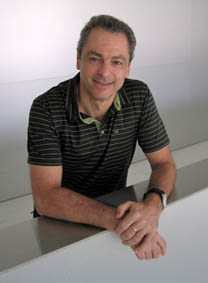
The researchers Fernando González and Andrés Moya proved that the anesthetist Juan Maeso had been the focus of transmission of hepatitis C virus in evolution to 275 patients, for which he was sentenced to go to prison six years ago. The results of determining expert evidence have now been published in the journal BMC Biology.
Six years after sentencing the Valencian anesthesiologist Juan Maeso for being the hepatitis C virus (HCV) focus of transmission to 275 patients, the scientists from the University of Valencia who provided expert determinant evidence for the sentence have been published results of their research in the journal BMC Biology. Thus, after respecting the judicial demands for the availability of data, the scientific community has supported the innovative work developed by the Cavanilles Institute of Biodiversity and Evolutionary Biology in the Science Park. In the making of the article, the researchers from the Centre of Public Health Research (FISABIO) of the Generalitat Valenciana (Valencian Government) have also taken part..
A group of reseacher from the University of Valencia, led by the full university professor of Genetics Fernando >González, proved through the phylogenetic analysis that the hepatitis C virus of the 275 infected patients came from the same focus, the virus which the anaesthesiologist Juan Maeso carried. The scientist tested, through a strict statistical analysis, who were those afected by the anaesthesiologist and who were not, what meant the exclusion of 47 afected people of the judicial trial because their infection came from other unknown sources. In addition, "making use of advanced techniques of evolutionary analysis, we could test the probable date of infection of each afected, with a coincidence of the 95% with the independently asigned dates by the public prosecutor", affirms Fernando Gonzalez.
Besides the complexity derived from the judicial treatment and the great number of samples and sequences with which the work was completed, Fernando González explains that an added dificulty was originated from the continous evolution of the virus in the source's bossom through ten years in which the outbrake's length was estimated, since Juan Maeso was infected and he stoped his professional activity when it was found out. As well as the AIDS (HIV), the HCV "evolves at a great speed, even within a single individual". This way, as Gonzales explains, "in a short period of time, very different viral populations despite their common origin can be found. The result in this case was that nearly all of the infected were carriers of different viruses which were not exactly the same as those found in the source from which all of them derived ."
The publication of this research in a powerful scientific journal, despite the delay by the complexity required by the courts and the requirements of the scientific method is "very important", according to the scientist of the University of Valencia, because "the scrutiny of the scientific community is even more complex than the judicial one". This publication in BMC Biology "allows to incorporate the molecular and evolutive epidemiological analysis in the expert-criminal area", he concludes.
As a continuation of this research, the team of Fernando González-currently in the Mixed Unit Genomics and Health created by the Universitat de València and the Superior Centre of Researching in the Pública Health (FISABIO) - has incorporated evolutionary analysis to the study of bacterial and viral pathogens of public health impact, such as the bacterium Legionella pneumophila, responsible for numerous outbreaks and cases of Legionnaires' disease in Alcoy and other locations in the Valencian Cuntry, or influenza virus, AIDS and different types of hepatitis. Thus, advances in genomic technologies and large-scale sequencing, together with bioinformatic analysis, are translated directly into practical applications in epidemiological surveillance and control of outbreaks and infections.
Molecular evolution in court: Analysis of a large hepatitis C virus outbreak from an evolving source. Fernando Gonzalez-Candelas, Maria A Bracho, Borys Wróbel, Andrés Moya. BMC Biology.
Last update: 23 de july de 2013 07:55.
News release



















